The Gospel According to Matthew is intricately structured. A simple outline can capture the basic shape of the book well enough to assist a good reading, but a little more attention shows that this book has several layers of order, all helpful. Consider some of the layers of organization in Matthew, starting with the simplest and moving to the most complex.
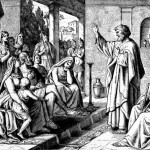 1. Chronological. A gospel is fundamentally a biography of Jesus, so of course it follows a chronological structure. But think about that for a minute: To tell people how to be reconciled to God, what the apostles did was tell a brief story of the life of Jesus. Check out Acts 10 for Peter’s sermon that caused the Holy Spirit to descend on the household of Cornelius. It’s a brief recitation of key events from Jesus’ life (John’s baptism, a healing ministry in Judea, a trip to Jerusalem, the crucifixion and resurrection) with some theological commentary (Jesus is Lord of all, God sent good news of peace through him, and in his name there is forgiveness of sin for those who believe). That’s a ten-verse introduction to how the apostles spread the gospel. Expand it a little bit and you’ve got the sixteen-chapter Gospel of Mark. Add some sermons to that and you’ve got Matthew. The point is, a chronological narrative is central to how Christians proclaim the good news of salvation. No wonder we call them Gospels.
1. Chronological. A gospel is fundamentally a biography of Jesus, so of course it follows a chronological structure. But think about that for a minute: To tell people how to be reconciled to God, what the apostles did was tell a brief story of the life of Jesus. Check out Acts 10 for Peter’s sermon that caused the Holy Spirit to descend on the household of Cornelius. It’s a brief recitation of key events from Jesus’ life (John’s baptism, a healing ministry in Judea, a trip to Jerusalem, the crucifixion and resurrection) with some theological commentary (Jesus is Lord of all, God sent good news of peace through him, and in his name there is forgiveness of sin for those who believe). That’s a ten-verse introduction to how the apostles spread the gospel. Expand it a little bit and you’ve got the sixteen-chapter Gospel of Mark. Add some sermons to that and you’ve got Matthew. The point is, a chronological narrative is central to how Christians proclaim the good news of salvation. No wonder we call them Gospels.
 2. Geographical. Matthew has lots of place indicators, and can profitably be read with an open atlas at hand. But the most important geographical marker in Matthew is the distinction between Judea at large, and Jerusalem in particular. Jerusalem, for Matthew, means the crucifixion. So no matter how many times Jesus may have gone to Jerusalem as a kid or during his ministry (for the annual feasts and such), Matthew tells the story of Jesus with a decisive “Jesus goes to Jerusalem” turning point in it. Matthew has this in common with Mark and Luke (Luke, in fact, makes an even bigger deal of the journey to Jerusalem, stretching it over 9 chapters and putting much of his distinctively Lukan material in that section).
2. Geographical. Matthew has lots of place indicators, and can profitably be read with an open atlas at hand. But the most important geographical marker in Matthew is the distinction between Judea at large, and Jerusalem in particular. Jerusalem, for Matthew, means the crucifixion. So no matter how many times Jesus may have gone to Jerusalem as a kid or during his ministry (for the annual feasts and such), Matthew tells the story of Jesus with a decisive “Jesus goes to Jerusalem” turning point in it. Matthew has this in common with Mark and Luke (Luke, in fact, makes an even bigger deal of the journey to Jerusalem, stretching it over 9 chapters and putting much of his distinctively Lukan material in that section).
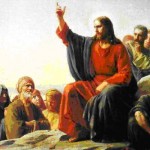 3. Discourses. Read a red-letter Bible and you’ll spot it right away: Matthew is dominated by long speeches by Jesus. This is his most obvious difference from the other synoptics. The sermon on the Mount (chapters 5-7) and the Olivet Discourse (23-25) are the biggies, but significant speeches occur at chapters 10 (on the mission of the apostles), 13 (on parables) and 18 (on community and forgiveness). Plus, Matthew the narrator concludes each of these major discourses with a formula like “when Jesus finished saying these things…” (7:28, 11:1, 13:53, 19:1, 26:1). These five discourses may be a counterpoint to the five books of Moses. And the narrative sections around them are probably carefully integrated with them, either leading up to them or developing their points.
3. Discourses. Read a red-letter Bible and you’ll spot it right away: Matthew is dominated by long speeches by Jesus. This is his most obvious difference from the other synoptics. The sermon on the Mount (chapters 5-7) and the Olivet Discourse (23-25) are the biggies, but significant speeches occur at chapters 10 (on the mission of the apostles), 13 (on parables) and 18 (on community and forgiveness). Plus, Matthew the narrator concludes each of these major discourses with a formula like “when Jesus finished saying these things…” (7:28, 11:1, 13:53, 19:1, 26:1). These five discourses may be a counterpoint to the five books of Moses. And the narrative sections around them are probably carefully integrated with them, either leading up to them or developing their points.
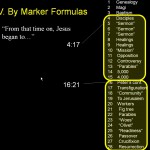 4. Structural Marker Formulas. At Matthew 4:17 and 16:21 the little phrase occurs: “From that time on, Jesus began to…” That’s an important signal from the narrator. The first one says “From that time Jesus began to preach, saying, ‘Repent, for the kingdom of heaven is at hand,'” and the second one says “From that time Jesus began to show his disciples that he must go to Jerusalem and suffer many things from the elders and chief priests and scribes, and be killed, and on the third day be raised.” That breaks the gospel down nicely into three sections:
4. Structural Marker Formulas. At Matthew 4:17 and 16:21 the little phrase occurs: “From that time on, Jesus began to…” That’s an important signal from the narrator. The first one says “From that time Jesus began to preach, saying, ‘Repent, for the kingdom of heaven is at hand,'” and the second one says “From that time Jesus began to show his disciples that he must go to Jerusalem and suffer many things from the elders and chief priests and scribes, and be killed, and on the third day be raised.” That breaks the gospel down nicely into three sections:
1. Introduction (1-4)
2. Proclamation of the Kingdom (4-16)
3. Necessity of the Passion (16-28)
Which has to be right. You could place the turning point a little earlier than 16:21, back with the sharp conflict with the pharisees and the decision to teach in parables. That would yield essentially the same dramatic structure, but would ignore the author’s clear transition markers.
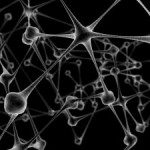 5. Thematic or Topical Structure. Remember that the basic structure of Matthew is chronological-biographical. But within that frame, Matthew frequently arranges his details non-chronologically. He tells miracle stories in clusters of two or three, often based on what kind of miracles they are. Jesus will heal the blind and the mute back to back, or calm a storm and then cast out demons, not because the events happened in that order but because the miracles are on the same topic, so to speak. Though this only applies on the smaller scale, it is well worth paying attention to throughout the Gospel.
5. Thematic or Topical Structure. Remember that the basic structure of Matthew is chronological-biographical. But within that frame, Matthew frequently arranges his details non-chronologically. He tells miracle stories in clusters of two or three, often based on what kind of miracles they are. Jesus will heal the blind and the mute back to back, or calm a storm and then cast out demons, not because the events happened in that order but because the miracles are on the same topic, so to speak. Though this only applies on the smaller scale, it is well worth paying attention to throughout the Gospel.
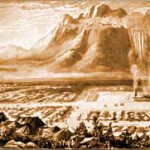 6. Recapitulating the History of Israel. Jesus is Israel in person; the covenant people in one man. Matthew signals this in several ways, beginning with the genealogy (son of David, son of Abraham) and moving on through the temptation in the wilderness, which shows Jesus triumphing over the same threats that Israel had faced during her time in the wilderness. Matthew also shows what he has in mind when he applies the prophetic saying “Out of Egypt I have called my son” to Jesus. After these early indications that Jesus is re-doing the Israel story, does the whole gospel continue along the path of showing Jesus as the suffering servant who succeeds in finishing Israel’s work? I think so, and I think that accounts for much of what is in the Gospel.
6. Recapitulating the History of Israel. Jesus is Israel in person; the covenant people in one man. Matthew signals this in several ways, beginning with the genealogy (son of David, son of Abraham) and moving on through the temptation in the wilderness, which shows Jesus triumphing over the same threats that Israel had faced during her time in the wilderness. Matthew also shows what he has in mind when he applies the prophetic saying “Out of Egypt I have called my son” to Jesus. After these early indications that Jesus is re-doing the Israel story, does the whole gospel continue along the path of showing Jesus as the suffering servant who succeeds in finishing Israel’s work? I think so, and I think that accounts for much of what is in the Gospel.
 7. Miscellaneous. Read back through the previous six factors, and consider how thoroughly they cover the ground. With that in mind, keep an eye out for some minor structural elements that may also be at work. Matthew loves to point out prophetic fulfillments, and they may be more than just footnotes: He may sometimes organize his material around the most compelling prophetic proofs. And how about chiasms? Yes, it’s possible, but interpreters ought to grow more sober and skeptical the more they find themselves beginning to see such things.
7. Miscellaneous. Read back through the previous six factors, and consider how thoroughly they cover the ground. With that in mind, keep an eye out for some minor structural elements that may also be at work. Matthew loves to point out prophetic fulfillments, and they may be more than just footnotes: He may sometimes organize his material around the most compelling prophetic proofs. And how about chiasms? Yes, it’s possible, but interpreters ought to grow more sober and skeptical the more they find themselves beginning to see such things.
Some Matthew commentaries will rehearse these structural principles as if the reader is forced to make a decision for one of them and against the others. It seems to me they can all be applied, flexibly and modestly, to an understanding of Matthew at the same time.